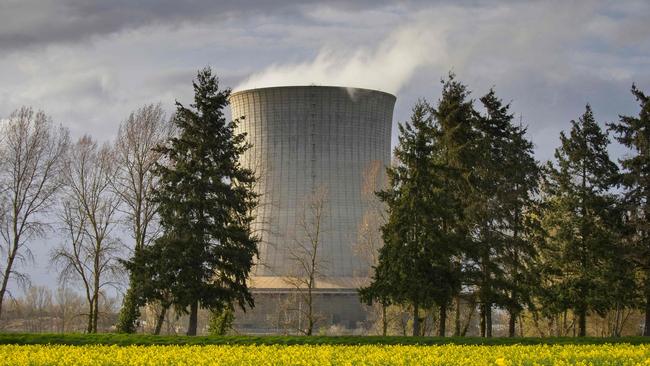Nuclear power part of the global warming solution
More than 10 years ago, the EPIA identified a lack of public trust in energy policy and that has only got worse thanks to too little public participation in policy formulation.

More than 10 years ago, the Energy Policy Institute of Australia (EPIA) asserted that there was a lack of public trust in energy policy.
With the passage of time, this lack of trust has increased. It is caused by a lack of public participation in policy formulation.
Instead of talking to the public, the government is dictating how to control climate change.
In December 2023, most participants in the UN Climate Conference in Dubai (COP28), reaffirmed their commitment to achieve ‘‘net zero’’ greenhouse gas emissions by 2050.
Australian Climate and Energy Minister Chris Bowen went to Dubai, telling participants that Australia would promote renewable energy to the exclusion of fossil fuels and nuclear energy. He had no mandate from the Australian population to say this. Perhaps he believed that the combined portfolio of climate and energy policy entitled him to say whatever he thought best.
At COP 28, an unofficial side-event pushed for a longer-term strategy to accelerate the global development of nuclear power. The Australian government did not join this event but opposition politicians, led by energy spokesman Ted O’Brien, said an alternative government would support it.
Australia emphasised its aspiration to become a renewable energy ‘‘superpower’’.
This ambition is disdainful of other countries, unless Australia is able to match its words with actions. Reducing our emissions in this way is in any case unlikely to move the global needle.
Australia can be proud of its achievements in the fields of nuclear medicine and civil nuclear research through the Australian Nuclear Science and Technology Organisation (ANSTO).
Now would be a good time for Australia to refocus on all energy technologies in a technology-neutral policy environment. This could be facilitated by splitting the climate and energy portfolio into two, bolstering the resources of ANSTO and refocusing on the security of fossil fuels as secure sources of energy for Australia’s export customers.
Of course, renewables make sense in sunny Australia but they are not the only energy source that does so. As well, whenever renewables are used, they invariably need to be supported by storage technologies or transported to distant centres of demand.
Solar energy makes special sense if solar panels can be installed on rooftops – enabling on-the-spot consumption.
But the transport and storage of all forms of energy imposes additional costs. The longer the distance, the more costly the transportation and hence the energy becomes.
North African countries have been working for years on the challenge of transporting renewable energy to Europe. Last year, the World Bank eventually approved a 600MW/ 220km undersea cable from Tunisia to Italy.
Australian investors are repeatedly asked by the Climate and Energy Minister to exploit Australia’s potential as a renewable energy superpower.
However, the choice of technologies is best left to investors.
In 1998, Australia prohibited the development of nuclear energy except for medical and research purposes. The repeal of this nuclear prohibition is long overdue.
Nuclear power is now used for electricity generation in 32 countries and 30 others are now considering it.
The tripartite AUKUS initiative has guaranteed that Australia will use nuclear energy for submarine propulsion. Nuclear energy should now also be considered for civil power generation. Because it will take some years to develop, an immediate start should be made on strategic development.
In the US, small-scale mobile nuclear reactors are at an advanced stage of development as a strategic asset to back up onshore power supply for the US military.
Australia could now similarly be evaluating the potential of mobile nuclear reactors for use across its vast mining landscape. But it must first repeal its archaic ban on nuclear power.
The public will almost certainly support reliable, secure sources of power that are not prone to breakdown. The public are principally concerned about rising energy costs and keeping their jobs – more concerned than whether Australia could be a renewable energy superpower.
Utilising the most diverse technology mix is the key to bridging the gap between the climate problem and the climate solution – it is the key to the very success of our energy transition.
The public will continue to rank the reliability and cost of domestic energy supplies as a decisive factor in their future selection of government.
It is bordering on weird for the Australian Climate and Energy Minister to reject debate on nuclear energy in Australia as a ‘‘distraction’’.
It is time for Australia to take a more open, diverse and innovative approach to reducing its emissions.
More public participation please. Make it genuine, make it diverse, split the portfolios and do it now.
Robert Pritchard is executive director of the Energy Policy Institute of Australia.



To join the conversation, please log in. Don't have an account? Register
Join the conversation, you are commenting as Logout